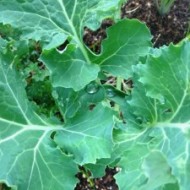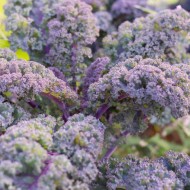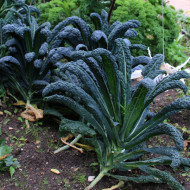Fashionable superfood, or how to grow kale cabbage in the garden
Content
Description of kale cabbage
Kale cabbage, or kale, is a bright representative of the Cabbage family. An annual herb is distinguished by the absence of a head of cabbage and a lush openwork green part. The leaves are curly, with a rigid stem and petiole, arranged in several rows. The color and height of the leaf plates depend on the variety. Often, kale is used for decorative purposes, decorating a garden or summer cottage.

Annual herb is distinguished by the absence of a head of cabbage
Kale came to the territory of Europe from Russia, which is why it got its name - Russian. There it was actively cultivated until the 17th century, when the culture was gradually replaced by head species. They yielded better and were more resistant to infections. Kale's popularity has revived thanks to American dietitians who have rediscovered its beneficial properties.
The plant does not have a pronounced aroma, however, sniffing, you can catch a slight smell of white cabbage. Kale is used to prepare salads, green cocktails, dressings and many other dishes.
Video "Kale cabbage: from planting to cooking"
This video tells you how to grow a vegetable crop on your site.
Benefits and nutritional value
Kale is low in calories (28 kcal per 100 g). Cabbage is easy to digest and contains a lot of nutrients:
- proteins;
- carbohydrates;
- amino acids;
- Omega-3 acid;
- vitamins: A, C, K, PP, group B;
- lutein;
- zeaxanthin;
- minerals: Mn, Fe, Zn, Ca, K, P, Na, Se, Cu;
- sulforaphane;
- indole-3-carbinol.

Table: chemical composition of collard greens
Being a storehouse of minerals and vitamins, the plant helps to cope with many diseases and has a positive effect on the body:
- is a powerful antioxidant, removes toxins, cleanses cells;
- strengthens the joints;
- has a positive effect on vision, is used to prevent eye diseases;
- relieves PMS symptoms;
- slows down the aging process, fights against age-related skin changes;
- supports oral health;
- lowers high cholesterol;
- has anti-inflammatory effect;
- enhances immunity;
- reduces the risk of malignant tumors.
Contraindications and harm
Despite the many benefits, collard greens are contraindicated:
- with an allergic reaction to feces;
- people suffering from kidney disease;
- in the presence of stones in the bladder or ureter.
Keil contains a large amount of oxalic acid, which is harmful to people with the above diseases.
Types and varieties
In appearance and chemical constituents, feces are divided into five main groups.Varieties vary in color, shape, size, useful qualities.
- Scottish kale
- Russian red cabbage
- Green curly cabbage
- Red curly cabbage
- Italian black kale
Green curly cabbage
The leaves of the plant are strongly curly, rich green. Some varieties tolerate winter well and can produce crops in the second season. Salads and soups are made from green curly cabbage.
Reflex F1 is the most popular kale hybrid with medicinal properties and good taste. We are very fond of supporters of a healthy diet or people on a diet. The bush grows up to 0.8 m, weight - 0.3–1.4 kg. Refers to mid-late varieties.
Red curly cabbage
The leaf plate of cabbage is openwork, similar to lace. The color can be deep red, maroon or deep purple. The species is valuable for its rich vitamin complex, as well as the content of magnesium and calcium. Kale of red varieties is used for making soups, stews, cabbage rolls.
In landscape design, the Redbor F1 hybrid is often used. Its height reaches 0.8 m, weight - 0.2-0.7 kg. The leafy part is dark purple, strongly curly. Refers to late-ripening varieties.
Italian black kale
The leaf plates of the plant are long, narrowed, lumpy. Color - dark green with a bluish tint. Italian kale contains a large amount of omega-3 fatty acids, lutein, vitamin C.
The most famous variety is Black Tuscany. Despite its southern origin, cabbage is winter-hardy and can withstand frost of -15 ° C. The length of the leaves is 0.6 m. Ripens 60 days after planting.
Scottish kale
Scottish kale, or Siberian cabbage, is characterized by increased frost resistance. The plant is suitable for growing even in regions with severe winters (Siberia, Urals). The color of the feces is bright green, the foliage is of a low degree of curliness.
Hungry Gap is the most popular variety among gardeners. The height of the bush is 0.9 m. A hybrid of early ripening, winter-hardy, gives a bountiful harvest. Used for making salads. When frozen, it is suitable for long-term storage.
Russian red cabbage
Cabbage leaves are narrow, elongated, carved. Painted green with crimson veins. At low temperatures, the hue changes to eggplant. The variety ripens 60 days after planting. Kale is not capricious, winters well in frosts down to -18 ° C. The plant is often found in recipes for various dishes, and is also planted for decorative purposes.
Growing feces by seedlings
In breeding, kale is unpretentious and does not require special care. However, in order for the cabbage to yield a large harvest and not get sick, it is necessary to follow the rules for growing this plant.
Landing dates
To ensure a constant harvest, gardeners are advised to sow feces several times per season. Despite the fact that cabbage can be of different ripening times, it is prepared for open ground in 6-7 weeks. Planting material begins to be prepared in the last days of March.
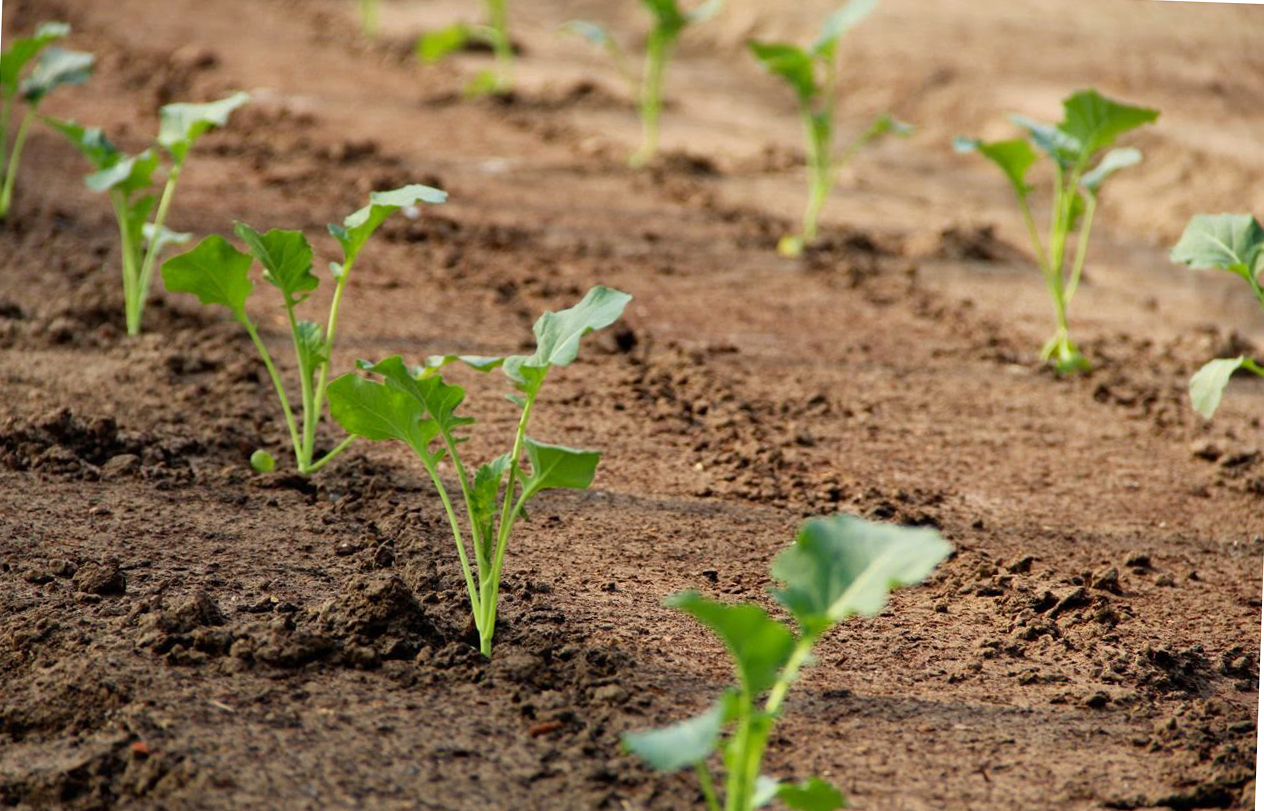
Seeds are sown several times per season
Preparation of soil and containers
Cale feels comfortable in neutral soil. The permissible level of acidity pH is from 5.5 to 6.8. If the indicator is lower, sulfur or peat is added. Excessively acidic soil is diluted with wood ash.
It is better to take a wide container for landing, with low sides.
Seed planting process
Sowing seeds for seedlings consists of the following stages:
- Small indentations of 1.5 cm are made in the soil. You can also use the tape method. The distance between the rows must be at least 10 cm.
- The planted planting material is abundantly moistened with a sprayer.
- Place glass on top of the container or cover with plastic wrap.
Seedling care and picking
The seedlings will grow well and will be strong if comfortable conditions are created for them. The ambient temperature should not exceed + 20 ... + 22 ° С. The soil should be constantly moistened without letting it dry completely.The sown seeds should be regularly ventilated to prevent steaming.
When the first shoots appear, they must be thinned out. The procedure is carried out after 5 days, removing weak and poorly developed shoots. The pick is carried out after 1 month.
Planting seedlings in the ground
Seedlings are transplanted after 5-7 weeks, when their height reaches 10 cm, and 4 full leaves will be present on the stem. Landing holes are dug 10 cm deep with an interval of 0.5 m from each other. The bottom is covered with a layer of wood ash or humus. A young plant is placed in a depression so that the root collar is at ground level. The procedure ends with abundant watering.
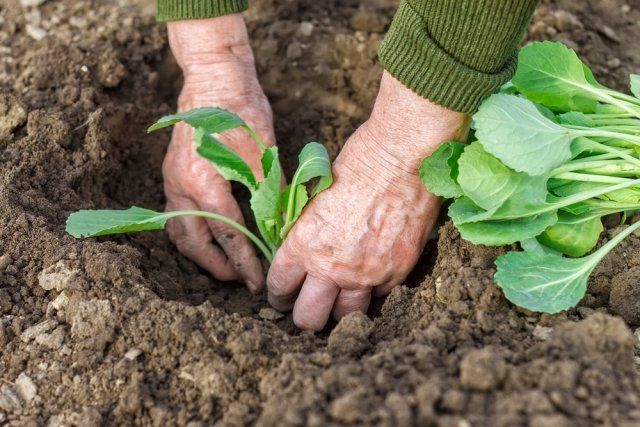
Planting in open ground is performed as the seedlings grow
Growing feces outdoors
Kale can be grown in other ways as well. Often, gardeners sow kale directly into the open ground. At the same time, the beds should be in sunny areas without excessive shading.
Landing time and scheme
You can plant feces in the last days of April, when the heat is established and there is no threat of frost. A bed for cabbage is prepared in the fall. Before wintering, the land is fertilized with mineral and organic fertilizers.
When sowing, the distance between the holes must be taken into account. It should be 0.4–0.5 m. Sometimes the chess method is used. The landing pattern is as follows:
- make holes 1.5 cm deep;
- put humus on the bottom;
- have planting material;
- fall asleep with soil;
- cover the bed with covering material;
- thin out the emerging seedlings;
- remove the spunbond.
Seedling care
Young seedlings require the same care as the cabbage family members. For the harvest to be plentiful, you must:
- regularly moisten the soil, preventing it from drying out completely;
- apply complex fertilizers at intervals of 14 days;
- weed weeds;
- periodically loosen the ground.
Gardeners recommend covering the garden with a layer of mulch to reduce the amount of weeds.

Crop care involves watering, fertilizing and removing weeds
Pests and diseases
To make the feces less sick, it is better to plant it after tomatoes, legumes or cucumbers. Despite the resistance to infections in some hybrids, one should not forget about prevention. The beds should be weeded regularly and the soil should not be compacted.
Most often, the key is attacked:
- aphids;
- fleas;
- flower beetles;
- wireworms;
- scoop;
- cabbage flies;
- rape sawfly;
- slugs;
- weevils.
Since the edible part of the cabbage is the leaves, the use of chemicals is not recommended. You can fight pests with no less effective folk remedies:
- sprinkle with wood ash;
- spray with an aqueous solution of acetic acid or infusion of bird droppings;
- process the leaves with diluted ammonia or iodine.
Harvesting and storage
You can harvest from the moment the cabbage has become at least 20 cm high.There are two ways:
- Leaves are torn off as they grow. Removal begins at the bottom to make the feces look like a palm tree.
- Cut the cabbage completely. The cut should be at a height of 5 cm from the surface.
The bare stems of the plant will soon be covered with new foliage, ready for re-harvest. You need to harvest cabbage on time, otherwise it will become tough and bitter. For cooking, only the leaf is used, but the stems are given for animal feed.
Fresh feces are stored for a week. To prevent it from wilting, they put it in a glass of water. The shelf life of frozen cabbage is 6 months.

Cabbage leaves are torn off as they grow
Kale cabbage in cooking
Fresh cabbage is most useful, since the useful qualities of the product are lost during cooking. A salad is made from it, adding tomatoes, basil, garlic and green onions. For refueling, use flax or sesame oil. Healthy eating hacks mix the stems of kale into vegetable shakes.Also, the leaves of the plant can be salted for the winter or pickled.
Some cuisines offer their own original kale recipes. Cabbage is stewed, fried, added to meat or potatoes. Often, green chips and lasagna are made from the leaves.
Forgotten for several centuries, kale is experiencing its revival again. The richness of minerals and nutrients makes this cabbage not just a vegetable, but a real superfood.

